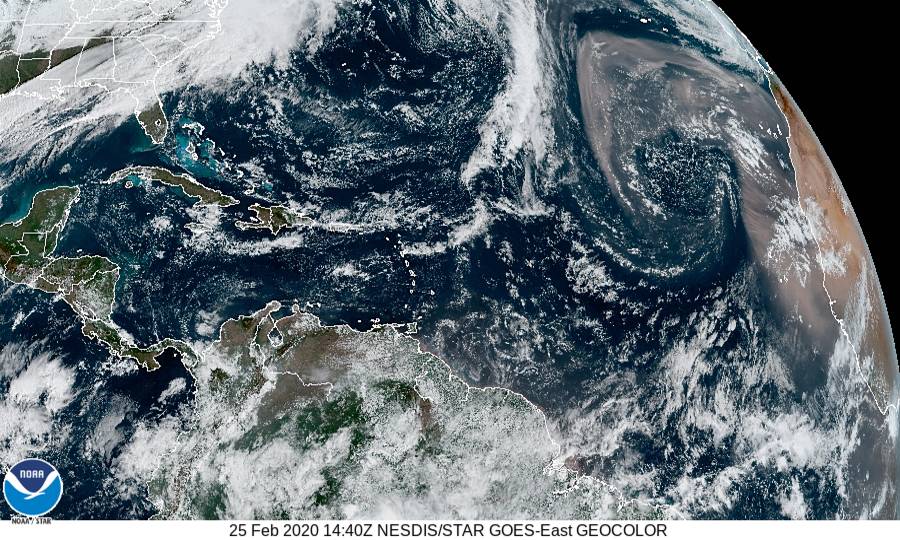- Oct 17, 2011
- 33,280
- 36,599
- Country
- United States
- Faith
- Atheist
- Marital Status
- Legal Union (Other)
The skies first became tinged a dusty tan across Spain’s Canary Islands on Saturday. By Sunday, an eerie-brown daylight dawned over an archipelago socked in by sand, prompting the closing of airports and even schools by Monday.
The culprit in this sand invasion is a large storm spinning over the northeastern Atlantic Ocean. The counterclockwise air circulation around the low-pressure area over the northeast Atlantic has drawn in sand from the Sahara Desert, propelling the dust directly over the Canary Islands before transporting it westward, toward the center of the storm.
On La Palma, the chain’s far northwestern island, the air quality index at one point Monday afternoon stood at more than 800 because of the presence of gritty fine particulates and aerosols in the air. According to the U.S. Environmental Protection Agency, values under 50 are “good,” while anything over 100 is “unhealthy.” Once the air quality index reaches 300, it’s considered “hazardous.”
The satellite photo is pretty amazing:
Arg, img not showing. How about this one?



The culprit in this sand invasion is a large storm spinning over the northeastern Atlantic Ocean. The counterclockwise air circulation around the low-pressure area over the northeast Atlantic has drawn in sand from the Sahara Desert, propelling the dust directly over the Canary Islands before transporting it westward, toward the center of the storm.
On La Palma, the chain’s far northwestern island, the air quality index at one point Monday afternoon stood at more than 800 because of the presence of gritty fine particulates and aerosols in the air. According to the U.S. Environmental Protection Agency, values under 50 are “good,” while anything over 100 is “unhealthy.” Once the air quality index reaches 300, it’s considered “hazardous.”
The satellite photo is pretty amazing:
Arg, img not showing. How about this one?



